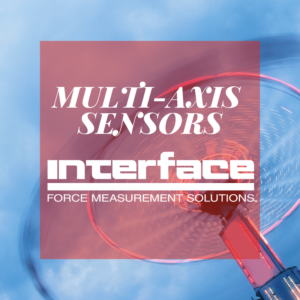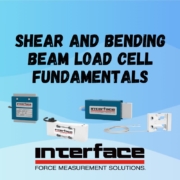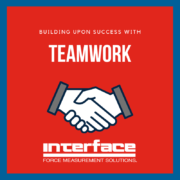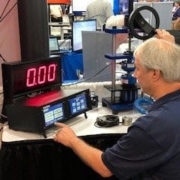Better Data and Performance with Interface Multi-Axis Sensors
 The increasing consumer demand for smarter and more sophisticated products is transforming design practices. Data-driven design is now at the forefront of product development and has become the catalyst to the explosion of sensor technology. Engineers require an increasing number of sensors to measure every aspect of their product. In response to this market need, we have developed a family of Interface Multi-Axis Sensors.
The increasing consumer demand for smarter and more sophisticated products is transforming design practices. Data-driven design is now at the forefront of product development and has become the catalyst to the explosion of sensor technology. Engineers require an increasing number of sensors to measure every aspect of their product. In response to this market need, we have developed a family of Interface Multi-Axis Sensors.
The Interface Multi-Axis Sensors measure a multitude of forces and moments simultaneously with a single load cell sensor. These sensors can precisely measure the applied force from one direction with little or no cross-talk from the force or moment. Interface’s 3-axis, 6-axis, and axial torsion load cells provide excellent performance and accuracy in force and torque measurement.
“Our multi-axis sensors measure forces simultaneously in three mutually perpendicular axes, with the 6-axis load cells also measuring torque around those axes.” Ken Bishop, Custom Solutions Director, Interface
The key advantages of Interface’s Multi-Axis Sensors are three-fold:
- The ease in which Interface Multi-Axis Load Cells can be set up and put in use provides a user-friendly experience. The software takes very complicated mathematics and presents it in a simple and understandable format. As an example, check out this quick video to see how easy it is to set up the 6-Axis to BX8-HD44.
- Interface products are known for accuracy and performance. The Interface Multi-Axis family of products provides the most accurate and comprehensive data readings on the market.
- Longevity is a common problem with most multi-axis Sensor products because of the various angles of stress the load cells endure. Interface products are built to last. The combination of robust design and strong materials ensure that Interface Multi-Axis Sensors remain in proper working order for longer than any similar device on the market.
Interface Multi-Axis Load Cells are ideally suited to many industrial and scientific applications, such as www.interfaceforce.com/solutions/aerospace, robotics, automotive, and medical research (orthopedics and biomechanical). In fact, their unique capabilities are helping the medical industry optimize prosthetic design via multi-axis testing. The automotive industry is using Interface’s multi-axis products in wind tunnels, and the military is using them to test the center of gravity in aerospace applications.
Interface is helping provide crucial data to global product engineers across all industries, which has never been available before. Our Multi-Axis Sensors have become a key component to optimizing designs in complex, multi-faceted products. With the data available today through Interface’s unique test and measurement products, engineers have the freedom to be more innovative in product design and development and meet the demands of consumers.
Read about our latest BX8 8-Channel Data Acquisition System and Amplifier and 6-Axis 6A Series 6-Axis Force and Torque Load Cell
An Interface customer ran into challenges when testing a new car seat by attempting to measure the force with a standard load cell rated at 550 pounds. After applying only 150 pounds of force, the load cells would break. While helping to troubleshoot the issue, Interface realized that the unique contour of the car seat was applying twist pressure that surpassed the standard load cells moment rating. Interface provided the customer with a 6-Axis Load Cell and they were able to measure the force on multiple-axis to optimize the car seat design. This is an example of a unique product development environment in which Interface Multi-Axis Sensors thrive.
By Ken Bishop, Custom Solutions Director, Interface







